The main plot of Airport 1975 deals with a small private plane whose pilot (Dana Andrews) has a heart attack mid-flight and ends up descending into the path of an oncoming Boeing 747. The two planes collide and the navigator (Erik Estrada) is killed, the co-pilot (Roy Thinnes) is sucked out of a gaping hole in the cockpit, and the captain (Efrem Zimbalist Jr.) is blinded and incapacitated, which leads to the film’s big tagline, “The stewardess is flying the plane!” as Chief-Stewardess Nancy Pryor (Karen Black) is stuck with the unenviable job of piloting the crippled plane through Utah’s Wasatch Mountains. Sadly, this being a 1970s' disaster movie, we can't expect to get much in the way of “woman empowerment” as poor Karen Black is relegated to mostly quivering in terror, with eyes welling up with tears at every given opportunity as she panics and succumbs to several indecisive key moments, which, of course, has the men on the ground deciding that they have to get a real pilot on board.
“There's no one left to fly the plane! Help us! Oh my God, help us!”
There are four movies in the Airport series, but as a franchise it could almost be considered an anthology, as there is no real plot threads that connect the films — each movie deals with a different airport and a different type of air disaster — but there is one element that does tie them all together, and that would be Joe Patroni (George Kennedy), who was the airport’s chief mechanic in the first film but has since moved up in the world and is now Vice President of Operations for Columbia Airlines. He’s also traded up families. In Airport, he was married to Marie Patroni (Jodean Lawrence), with five kids we didn't even get the chance to see, but in Airport 1975, he’s married to Helen Patroni (Susan Clark) with only one child. So one must ask, "Did he divorce his Marie and ditch his family to marry the much younger Helen, or is it just bad continuity?"George Kennedy, the side of beef that walks like a man.
The film is simply brimming with taut moments and high tension as Captain Al Murdock (Charlton Heston), Columbia's chief flight instructor, tries to talk Nancy through the plane’s operation — eventually he will be the man to survive the midair transfer and safely land the plane — but unfortunately, to pad the film’s run-time, we have the obligatory mid- to big-range named actors wandering in and out of the movie. There is the aforementioned Gloria Swanson, heading to Los Angeles on a book deal, a group of drunken conventioneers (Norman Fell, Jerry Stiller and Conrad Janis), an alcoholic (Myrna Loy), who is in a neverending search for her next drink, a sad sack two-bit actor (Sid Caesar), a couple of nuns played by Martha Scott and Helen Reddy, and a sick girl (Linda Blair) desperately in need of a kidney transplant.Trivia Note: Though the plot of 1980 Abrahams and Zucker disaster spoof Airplane! was heavily based on the 1957 film Zero Hour, much of the elements lampooned were from Airport 1975, right down to the singing nuns and sick girl.
Bonus Trivia Note: The hero of Zero Hour, Lieutenant Ted Stryker, was played by Dana Andrews, who of course is the pilot that crashes into the 747 in this film.
And what would an Airport movie be without overt sexism? Though the Heston character isn’t having an extramarital affair — as Burt Lancaster and Dean Martin both were in the previous film — he has been stringing along poor Nancy for six years, so he’s no saint. But the real painful moments are with the co-pilot and the navigator, as they bring workplace harassment to a whole new level.
Flight Navigator Julio, upon coming up behind the two stewardesses: “There. You see why I love my job so much?”
First Officer Gary Urias: “They sure have all the right equipment.”
Flight Navigator Julio: “But it would be wrong, that’s for sure.”
Chief-Stewardess Nancy Pryor: “How are your kids and wife, Julio?”
Flight Navigator Julio: “Watch out for that one, Gary. She’s got seniority.”
First Officer Gary Urias: “What about the teenager?”
Stewardess Bette: “It’s Ms. Teenager, please. I’m emancipated and highly skilled in Kung Fu.”
First Officer Gary Urias: “Whatever happened to womanhood?”
Airport 1975 Drinking Game: Take a shot every time someone calls Karen Black “Honey.”
As disaster films go, Airport 1975 fits the bill quite nicely — the aerial footage during the midair rescue is particularly well-done — and when not hysterically crying, Karen Black gives a rather strong performance, and even Charlton Heston manages to elevate the stock hero part just a tad. This may not be the best example of the genre, but director Jack Smight does keep the viewer on the edge of their seats as mountains close in, the radio goes dead, and fuel leaks from the wing. What more could you want out of an air disaster movie?Note: The cruising speed of a Boeing 747 is about 570 mph, yet with a gaping hole in the cockpit, at most all we see is a light breeze wafting in.
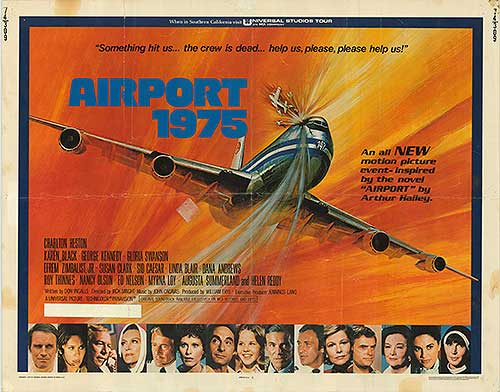
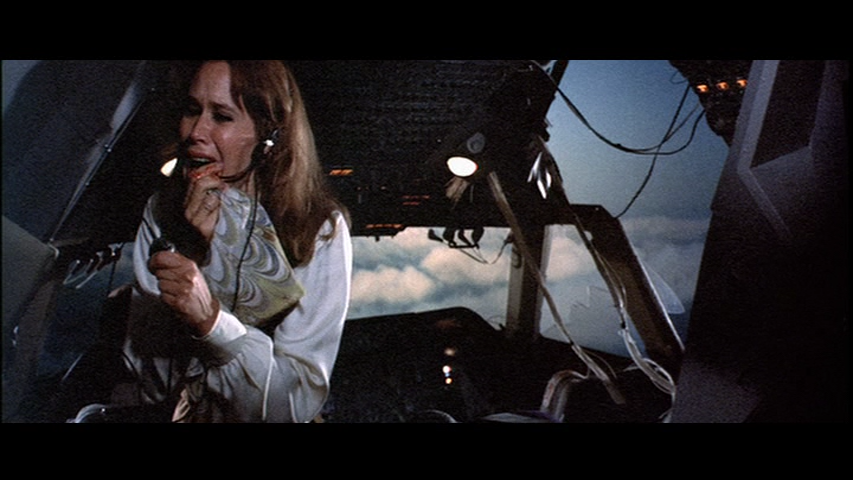
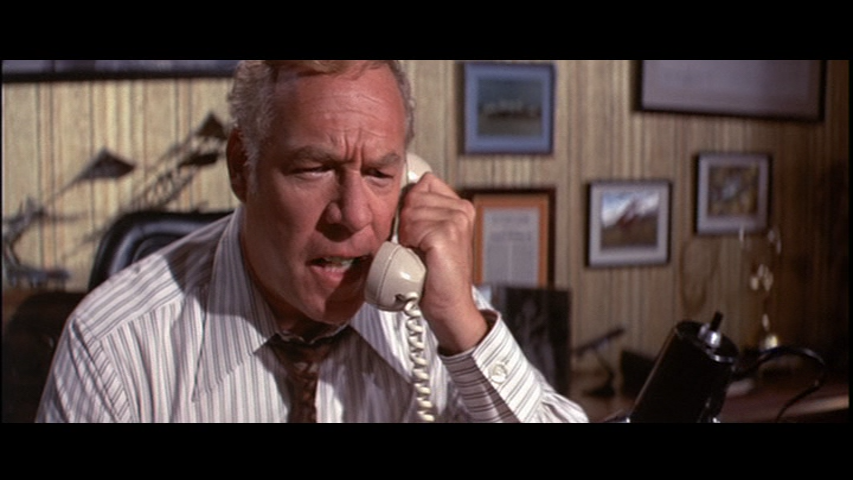
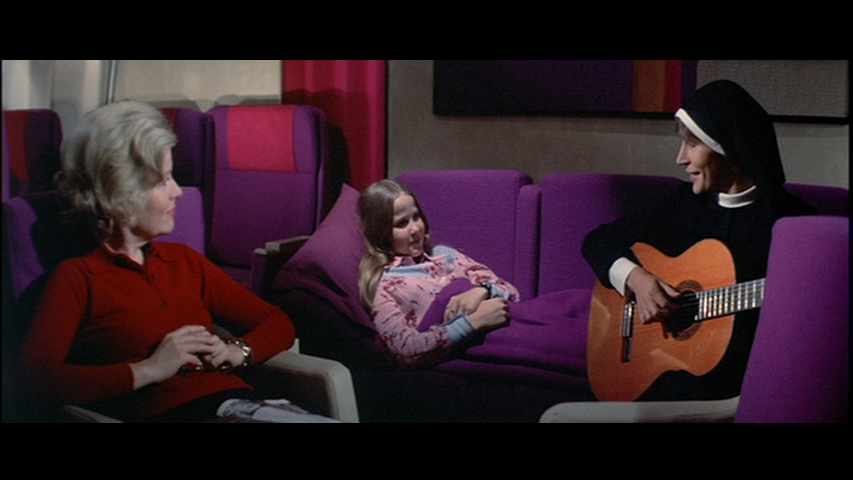
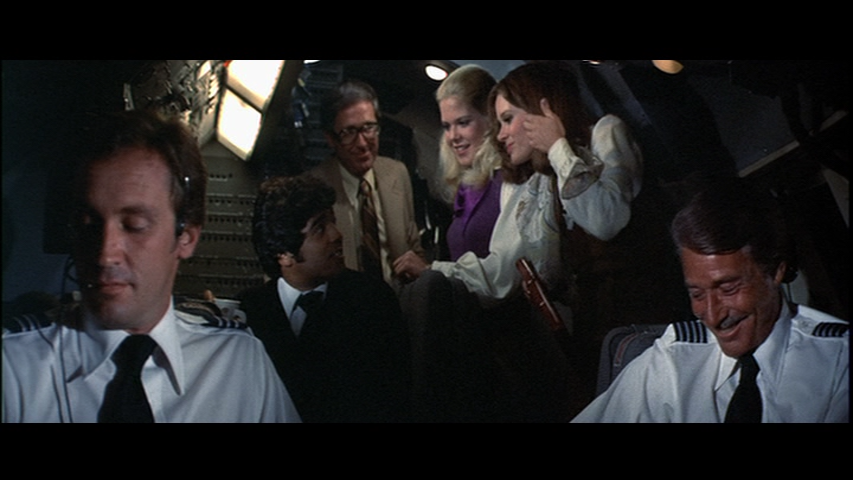
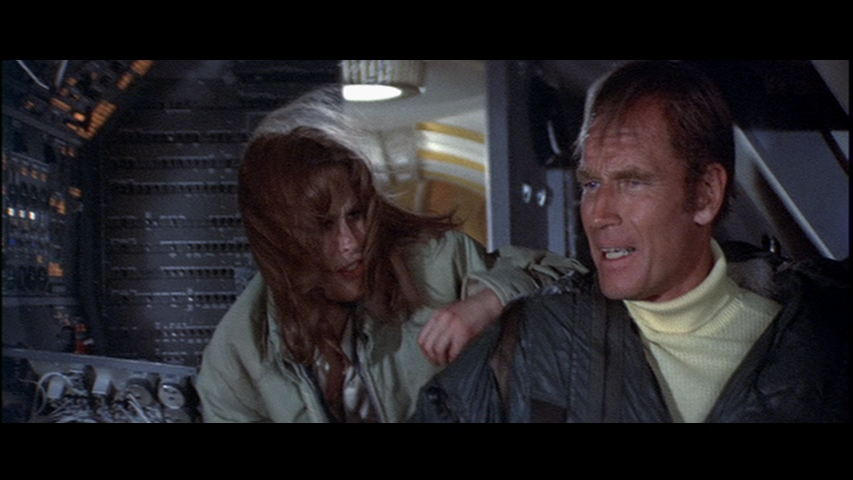

No comments:
Post a Comment